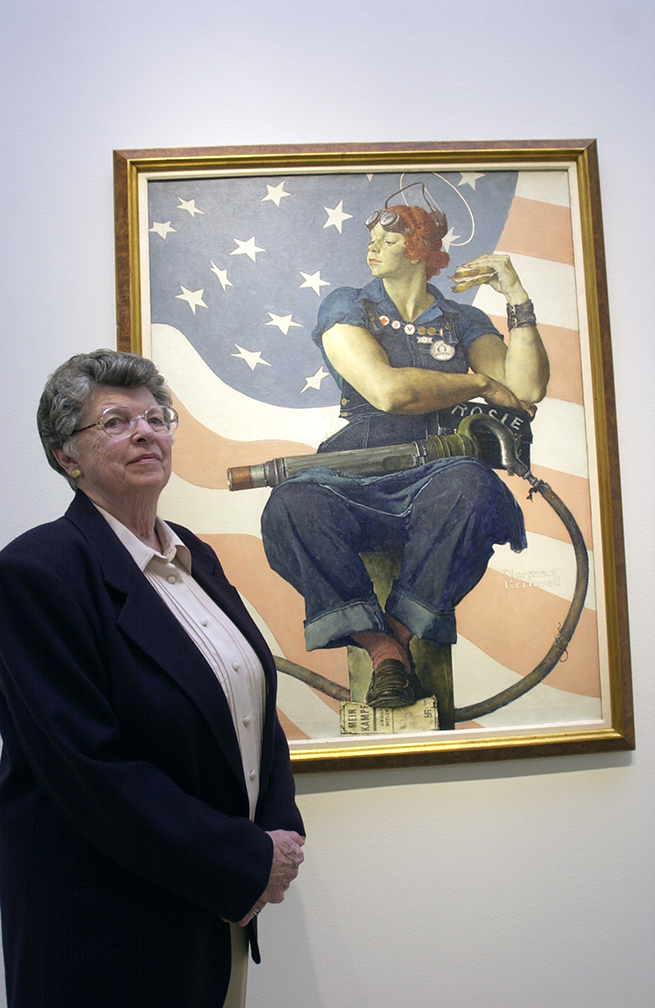AARP Hearing Center


The idea of Rosie the Riveter, a strong woman who gets things done while the men are called away to fight the enemy, was born during the early years of World War II.
But the ideal of Rosie, a take-charge woman who is part of an indomitable sisterhood of leaders, was reborn in 1982 when a poster created in 1943 resurfaced at the National Archives.
The inspiration behind Rosie the Riveter was Rosalind “Roz” Palmer Walker, a well-to-do Long Island 19-year-old who decided to forego a Seven Sisters college education to start work in 1942 on the assembly line at Vought Aircraft Co. in Stratford, Connecticut. You could call her the first Rosie.
She also was the last surviving Rosie who became famously associated with the symbolic Rosie. She died March 4, 2020, at age 95 in New York City.
A nickname captures 1940s attention


The legend of Rosie was begun by Igor Cassini, a nationally syndicated society columnist who wrote about Rosalind Palmer. Writer Alice Hughes of King Features Syndicate visited Palmer again in July 1943 for another story.
Cassini's column caught the fancy of songwriters Redd Evans and John Jacob Loeb, who wrote a song titled Rosie the Riveter that several bands popularized in 1943.
A few months later, artist Norman Rockwell was inspired to create a cover for the May 29, 1943, issue of The Saturday Evening Post in advance of Memorial Day. He asked then-19-year-old Mary Doyle Keefe, a phone operator in Arlington, Vermont, to pose for him. She died April 21, 2015, at age 92 in Simsbury, Connecticut.
By 1944, Hollywood also had stepped up to Rosie's plate.
Rose Will Monroe, a riveter at Willow Run Aircraft Factory in Ypsilanti, Michigan, became another Rosie when actor Walter Pidgeon discovered her that year and tapped her to appear in a War Bonds promotional film. Monroe died May 31, 1997, at age 77 in Clarksville, Indiana.
In April 1944, Republic Pictures released a full-length movie Rosie the Riveter, set in a California defense plant and starring actress Jane Frazee as Rosalind “Rosie” Warren. Frazee, leading lady in several 1940s films who was dubbed the “Queen of the B Musicals,” died Aug. 30, 1985, at age 70 in Newport Beach, California.


































































More on History
Rosies, Are You out There?
The hunt is on for the original ‘Rosie the Riveters’
Unsung Hero of WWII Boosted Morale by Sorting Soldiers' Mail
Hilda Griggs, 99, is one of the last surviving members of the all-female 6888th postal unit